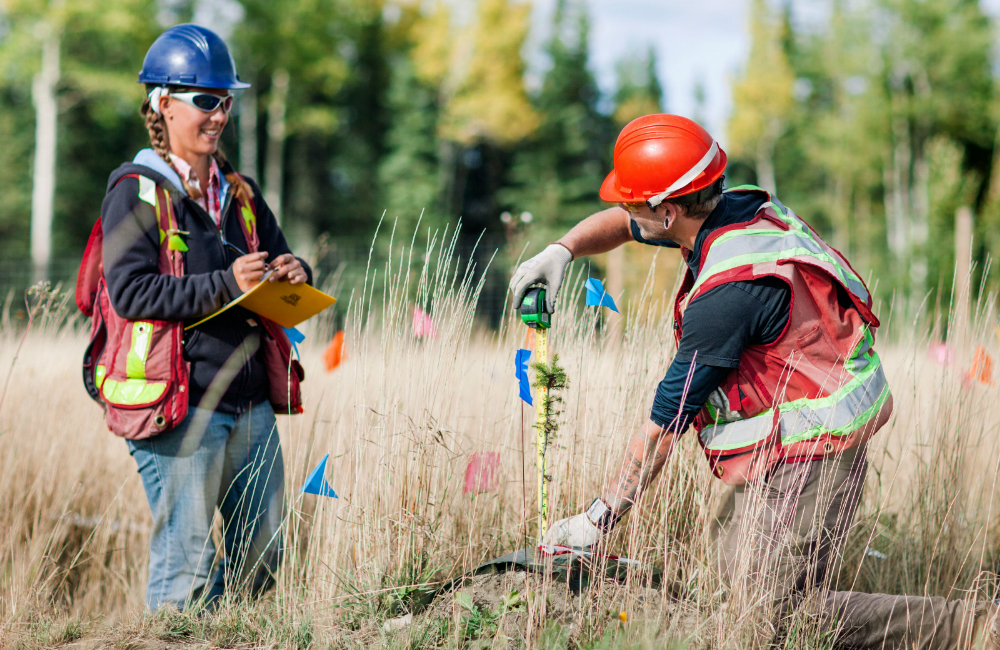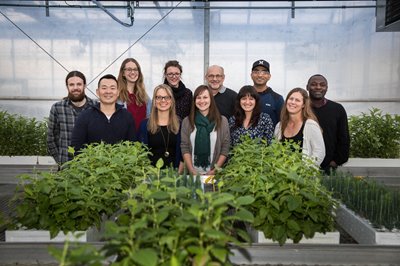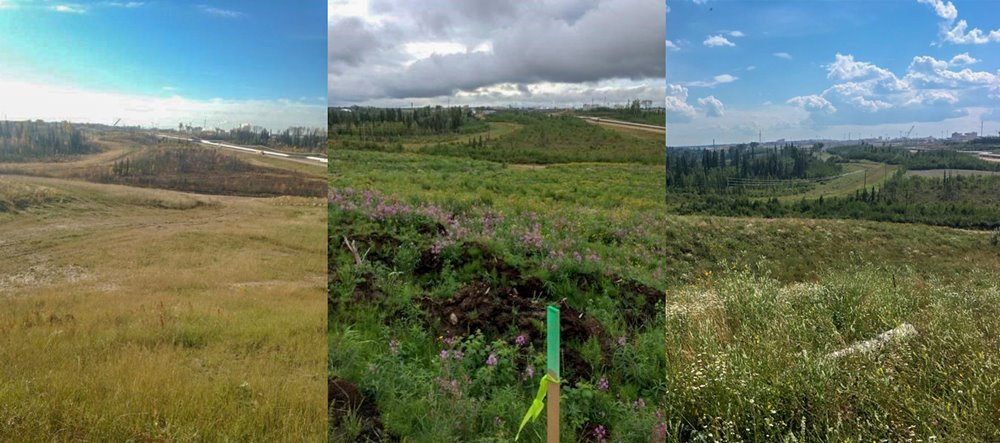
NAIT’s Boreal Research Institute teams with industry to transform industrial sites into vibrant forests
Mother Nature is a tough act to follow, but that doesn't stop Dr. Amanda Schoonmaker from trying.
Schoonmaker is the NSERC Industrial Research Chair for Colleges in Boreal Reclamation and Reforestation at NAIT. She works with industry to find practical ways to reclaim former industrial sites such as oil and gas wells and turn them into forests.
“In some ways it’s like we’re doing forest gardening."
“In some ways it’s like we’re doing forest gardening,” says Schoonmaker. “We work with a lot of native plant species and different equipment, techniques and approaches to get at that end goal of restoring a functional ecosystem.”
Based at NAIT's Boreal Research Institute in Peace River, Schoonmaker's applied research program involves forest reclamation on sites owned by industry partners across northern Alberta.
Sowing seeds of success
The sites vary by types of disturbances, size, age and level of activity (some have been inactive for decades while others are partially in use), all of which present different challenges in getting a forest to take root.
“Some of these sites are very old and soil handling practices would have been very different 30-plus years ago,” Schoonmaker explains. “Open-pit mining is going to be very different in terms of the kind of soil you have and what you have to work and the quality you have to work with than what we see in a typical one- to three-hectares oil and gas or in-situ oilsands operation.”
 The work of scientists at the Boreal Research Institute and elsewhere in Alberta is changing the nature of forest reclamation and operations on the ground. Traditionally, planting involved only species of commercial importance for timber such as lodgepole pine or white spruce.
The work of scientists at the Boreal Research Institute and elsewhere in Alberta is changing the nature of forest reclamation and operations on the ground. Traditionally, planting involved only species of commercial importance for timber such as lodgepole pine or white spruce.
“We have to be open minded to different approaches and thinking differently about how we do reforestation.”
Schoonmaker and her team, which includes many NAIT students who work in Peace River over the summer, also plant deciduous species like aspen, paper birch, balsam poplar and different shrubs that show early success in taking root and propagating. They’re also trying different techniques for spreading seeds, from uniform plantings to grouping species and mixes in clusters.
“We have to be open minded to different approaches and thinking differently about how we do reforestation,” Schoonmaker says.
Temporary forest, lasting diversity
One of Schoonmaker’s projects involves planting native herbaceous species, shrubs and trees on 8 hectares of surface soil that’s been stockpiled at the Surmont, an oil sands site southeast of Fort McMurray, operated by ConocoPhillips and part of a joint venture with Total E&P Canada. The company donated $1.1 million to NAIT in 2014, including $550,000 over 10 years for boreal research and the launch of the ConocoPhillips Canada - Surmont Boreal Reclamation Project.
The stockpile is temporary, meaning it’s eventually going to be moved to reclaim the Surmont site when it is no longer operational. Despite being temporary, the forest will set up the final reclamation for greater success and biodiversity, Schoonmaker says.
“When they take that soil and use it for reclamation they may see a great deal of suckering of native species in the soil itself because it will have grown for 30 or 40 years. It will be a forest.”
Not even Mother Nature can plant a forest overnight, so one of the realities of forest reclamation is waiting years, sometimes decades, for results. But it appears good things are already taking root at Surmont, according to Robert Albricht, senior coordinator environmental projects with ConocoPhillips Canada.
"You can also hear the difference, as the site is now a busy place for insects and birds."
“We had this smooth, mostly grassy site, which is now much harder to walk across due to the roughness of the site and abundant growth of shrub and tree species following the establishment of the experimental trials. You can also hear the difference, as the site is now a busy place for insects and birds.”
The photos below show the progress made in just three years (left to right: October 2014, September 2016 and September 2017).

Published on April 20, 2018
Share this page:

Forest reclamation follows nature’s blueprint
NAIT’s Boreal Research Institute teams with industry to transform industrial sites into vibrant forests.
Share on Facebook